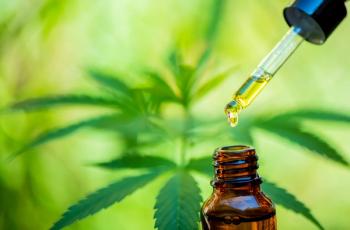
Cannabis Science and Technology
- July/August 2024
- Volume 7
- Issue 4
- Pages: 20-26
Polysorbate 80: An Emulsifying Agent in Cannabis Concentrate Microbiology
This study shares how polysorbate 80 can be used in homogenization of cannabis concentrates to first determine if this additive aids in the extraction of the cannabis extract matrix and then testing to see how well target organisms survive in the extraction environment.
In this study, polysorbate 80 is used in homogenization of cannabis concentrates to first determine if this additive aids in the extraction of the cannabis extract matrix. Secondly, polysorbate 80 is then tested to see how well target organisms survive in the extraction environment. Through linear regression, it was found that not only does polysorbate 80 assist in the extraction of matrix into solution, but it also offers a suitable environment for select target organisms. Ultimately by referencing a modified Food and Drug Administration (FDA) Bacteriological Analytical Manual (B.A.M.) method of extraction, we as cannabis scientists can begin to merge the knowledge of preexisting microbiology with cannabis microbiology to aid in the safety of the consumer.
Introduction
It has been estimated that by 2028, US adult-use cannabis sales may reach upwards of $56.9 billion (1). With growth comes new products to the marketplace and ultimately the responsibility for ensuring the safety of the finished product falls onto compliance laboratories. Although cannabis-containing products are illegal on a federal level, certain states have legalized them for medicinal or recreational use. Due to this, the regulatory framework governing cannabis testing is determined on a state-by-state basis (2). Detection methods are structured either on a detect/ non-detect whereas any amount of target will fail the product or a threshold system, wherein microorganisms may be detected, but as long as they are below the target threshold, they are considered safe for human consumption or use. In large quantities, it has been found that these categories of microorganisms can lead to harm if not properly tested for (3).
One of the more complex matrices to test for is cannabis extracts. These extracts are formulated by utilizing solvents and/or manual means to isolate cannabinoids and terpenes from the cannabis plant. The solvents employed in this extraction process include butane, propane, ethanol, or carbon dioxide (CO2) (4). Additionally, alternative solventless extraction methods are available. Apart from potential matrix interferences that may affect quality indicators of microorganisms due to high levels of cannabinoids, the matrix itself poses challenges in terms of weighing, extracting, and quantifying due to the consistency of the sample. Chapter 23 of the FDA Bacteriological Analytical Manual (B.A.M.) references the use of polysorbate 80 in the homogenization of solids, powders, and oil-based products to aid in the these matrixes coming into solution (5). The addition of surfactants to cannabis microbiology is not new science, but by leveraging existing knowledge in the field of microbiology, a modified FDA B.A.M. method was put to the test (11).
In this study, step-wise increasing percentages of polysorbate 80 were added to Butterfield’s phosphate buffer, resulting in a total volume of 9 ml (see Table II) When following true FDA B.A.M. chapter 23, the preparation procedure is to “Aseptically remove and weigh 1 g sample into 20 x 150 mm screw-cap test tube containing 1 ml sterile Tween 80. Disperse product in Tween 80 with sterile spatula. Add 8 ml sterile MLB and mix thoroughly. This will be the 10-1 dilution,” (5). Due to the difficulty in handling the cannabis extract matrix, the sample was weighed into a 50 ml centrifuge tube and the Tween 80 was added to the tube. A sterile spatula was used to mix the concentrate and tween 80 together until mixed. Following mixing, 8 ml of sterile Butterfield’s phosphate buffer was added. The diluent was subsequently tested to address two key questions. The first question was whether the combination of polysorbate 80 and Butterfield’s phosphate buffer allowed the matrix to be effectively extracted into the solution. The second question was whether the mixture of polysorbate 80 and Butterfield’s phosphate buffer provided a suitable environment for microorganisms to thrive, enabling their quantification through culture-based methods in microbiology. Culture-based methods of quantification allow for living and viable organisms to grow on their selective media. For this to be accomplished the target organism must survive the environment that is used for extraction.
Experimental Methods
Sample Preparation: Target dilution was created by combining polysorbate 80 and Butterfields phosphate diluent to the desired percentage as described in Table II. Distillate was added to solution and appropriate test was conducted after.
Cannabinoid concentration: 1 gram of the sample was weighed out to assess the effectiveness of polysorbate 80 in extracting matrix into the solution. In this study, the samples were subsequently diluted with Butterfield’s phosphate buffer and polysorbate 80, increasing stepwise by 1% from 0% to 10% of polysorbate 80 as described in Table II. Samples were conducted in triplicate. Once diluted, the samples were shaken and further diluted with methanol. Upon dilution, the samples were vialed, and cannabinoid concentration was determined via HPLC-UV, following a modified AOAC Official Method of Analysis 2018.11 (9). While broad-spectrum cannabinoids can be determined, ∆9-tetrahydrocannabinol (∆9-THC) was the only analyte plotted, as the cannabis distillate is primarily composed of this cannabinoid. Statistical analysis was conducted on ethanol extracted cannabis distillate, but additional solvent-based, and non-solvent concentrates are included.
Target microbiological survival rate: To assess the viability of polysorbate 80 as an suitable environment, target organisms as depicted in Table I were cultivated in single analyte cultures and aseptically added to one gram of cannabis distillate. The samples were then diluted with Butterfield’s phosphate buffer and polysorbate 80 as described in Table II. Once diluted, samples were prepared onto their respective media for quantification. Samples were replicated 8 times to conduct enough data points.
Aerobic plate count: Rapid aerobic plate count petrifilm by 3M is a self-contained dehydrated media that facilitates the growth of bacteria aerobically for the purpose of enumeration. Plates of 1 mL of sample were pipetted to the center of the plate and pushed with a 3M spreader. These plates were incubated at 35 ±1°C for 48 ±2 hours. This was done in accordance with the instructions given by the manufacturer and AOAC recommendations (6). Following incubation, colony forming units (CFU) were counted as a measure of microbial survival. All target organisms aside from Candida albicans were pleated on APC plate.
Rapid yeast and mold: Rapid yeast and mold petrifilm by 3M is a simple ready to use plate system with specialized antibiotics to facilitate the growth of only yeast and mold on the plate in a rapid manner. The plates of 1 mL of sample were pipetted to the center of the plate and pushed with a 3M flat spreader.These plates were incubated at 25 ±1°C for 60-72 hours (7,8). This was done in accordance with the instructions given by the manufacturer and AOAC recommendations. Following incubation CFU were counted as a measure of yeast survival.
Tempo YM: TEMPO YM test comprises a vial of culture medium and a card specifically designed for this purpose. The culture medium is inoculated and then transferred to a YM-specific card, which contains 48 wells of three different volumes, simulating Most Probable Number (MPN) (10). Following inoculation, the plates are incubated according to the manufacturer’s instructions and AOAC recommendations (10). During the incubation period, any yeasts and molds present in the card metabolize the substrate in the culture medium, leading to the appearance of a fluorescent signal (10). This signal is detected by the TEMPO Reader instrument. The TEMPO MPN technology was selected for the quantification of Aspergillus flavus to avoid the issue of colony spreading on plates that may occur and alter results.
Statistical Methods
To determine associations between polysorbate 80 levels and microorganism counts, a series of linear regressions were fit, using percentage polysorbate 80 as the independent variable. Another linear regression was fit comparing Delta 9- concentration with polysorbate 80 levels, again using polysorbate 80 as the independent variable. Scatter plots indicated that the relationship between polysorbate 80 and C. albicans count was non-linear, so a quadratic term was added to the model for better fit. Significance was set a priori at 5%, and all analyses were conducted in R version 4.3.1.
Results
In both the full data and the analysis data with removed values, there were positive correlation between polysorbate 80 percentage and ∆9-tetrahydrocannabinol (THC) recovery.
Statistical analysis was conducted on cannabis distillate, alongside testing of five additional cannabis extracts to explore their relevance in both solvent and non-solvent based cannabis concentrates, as well as the varying types of solvents used in extract production. Bubble Hash is a solventless cannabis concentrate made by agitating cannabis plant material in ice water and filtering it through fine mesh screens. Budder is a cannabis concentrate made using a solvent extraction process, often with butane or CO2. Live Rosin is a solventless cannabis concentrate created by pressing freshly frozen cannabis flower or bubble hash to extract resinous trichomes. Rick Simpson Oil (RSO) is a full-spectrum cannabis extract made using a solvent extraction method, typically with ethanol or isopropyl alcohol. Sugar, also known as ‘sugar wax’ or ‘sauce’, is a cannabis concentrate with a crystalline, granular texture, produced through a combination of solvent extraction and purification techniques.
Linear relationships were observed in A. flavus, E. coli O157:H7, S. aureus, L. monocytogenes, S. enterica, and E. coli (migula). A non-linear relationship was observed in C. albicans, which was handled with the addition of a quadratic term to the model.
Regression Results
There was a significant association with polysorbate 80 percentage and concentration, with every percent increase of polysorbate 80 associated with a mean increase of 76 (95% CI: 43, 110) in the analysis data, and a mean increase of 159 (95% CI: 131, 188) in the full data.
There were no significant associations between polysorbate 80 levels and A. flavus, E. coli O157:H7, S. aureus, S. enterica, and E. coli (migula). There was a significant association between polysorbate 80 and Listeria count, with every percent increase in polysorbate 80 associated with a mean decrease of -2.1 (95% CI: -2.7, -1.5) in Listeria count. Initially, the relationship between C. albicans and polysorbate was modeled with a linear fit. However, diagnostic residual plots indicated there was a non-linear relationship between C. albicans and polysorbate 80. Adding a quadratic term (the percentage of polysorbate 80 squared) led to a better fit. The new quadratic model indicates that increasing percentage of polysorbate 80 is associated with a mean decrease of -2.8 (95% CI: -4.2, -1.4) C. albicans count, but only up to a certain point. Around 6% polysorbate 80, higher percentages are associated with an increase in C. albicans count. However, these results are impacted by larger levels of missingness in C. albicans count for polysorbate 80 percentages between 3-6%, and future research is needed to validate these findings. A linear regression without the quadratic term found no significant relationship between polysorbate 80 and C. albicans count.
Discussion and Conclusion
As microbiologists, prioritizing customer safety drives our efforts to pull valuable resources from relevant matrices. This study is designed to address two key questions: firstly, whether polysorbate 80 can effectively extract cannabis distillate into solution when combined with Butterfield’s phosphate diluent, and secondly, whether increasing the concentration of polysorbate 80 maintains a conducive environment for microbial contaminants.
As the relative percentage of polysorbate 80 in the solution increases, there is a corresponding increase in the amount of ∆9-THC extracted (see Figure 1, Table III). Based on this data, we can conclude that there exists a statistically significant relationship between the concentration of polysorbate 80 and the extraction of ∆9-THC, confirming the success of the extraction process in both solvent and non-solvent based concentrates.
Secondly, to determine the suitable environment for polysorbate 80 and Butterfield’s phosphate mixture, we evaluated the solution using five different target organisms shown in Table I. Aspergillus flavus, Escherichia coli O157:H7, Staphylococcus aureus, Escherichia coli (migulla), and Salmonella enterica Abony showed no significant impact from the increasing concentration of polysorbate 80 (refer to Figure 3, Table IV). Candida albicans, although non-significant upon initial assessment, warrants further investigation with additional data points, especially within middle concentrations, to observe and analyze any potential linear relationship (see Figure 3, Table IV). Lastly, increasing levels of polysorbate 80 demonstrated a decreasing effect on CFU count for Listeria monocytogenes (refer to Figure 3, Table IV). At the time of this publication, only four states include Listeria monocytogenes as a target organism for compliance testing (2). However, as regulatory frameworks evolve, it’s crucial to acknowledge potential biases in target organisms resulting from their extraction methods. Furthermore, this study employed culture-based microbiology methods, whereas current testing regulations for Listeria monocytogenes favor a molecular approach for the detect/non-detect threshold. Additional research is warranted to ascertain the detectability of Listeria monocytogenes at a genomic level.
The concentrate matrix poses one of the most difficult challenges in the cannabis testing industry. From its sticky consistency to its high concentration of cannabinoids, this matrix stands out as truly unique. As microbiologists, our commitment to customer safety drives us to extract valuable insights from similar matrices, exploring whether they can offer solutions to enhance testing processes in cannabis. As cannabis laboratories, it’s imperative that we play our part in ensuring both the safety of our clients and the refinement of testing methodologies for these distinctive matrices.
Acknowledgements:
Thank you to Method Testing Labs for allowing this research to be funded and conducted within its testing space.
References
- Lamers, M.; Robertson, K.; Roberts, C. Projected US Legal Medical and Recreational Cannabis Market Size. MJBizDaily. 2023.
https://mjbizdaily.com/us-cannabis-sales-estimates/ (accessed July 24, 2024). - Dailey, S. Cannabis Microbial Testing Regulations by State. Medicinal Genomics. 2021.
https://www.medicinalgenomics.com/cannabis-microbial-testing-regulations-by-state/ (accessed July 24, 2024) - Upton, R.; Craker, L.; ElSohly, M.; Romm, A.; Russo, E.; Sexton, M. Cannabis Inflorescence: Cannabis spp.; Standards of Identity, Analysis, and Quality Control; American Herbal Pharmacopoeia, 2014.
- Precisionextraction. The Ultimate Guide to Cannabis Extract. Precision Extraction Solutions. 2023.
https://precisionextraction.com/2021/04/cannabis-extract-guide/ (accessed July 24, 2024). - Food and Drug Administration. Bacteriological Analytical Manual. Chapter 23, Microbiological Methods for Cosmetics; 2001.
https://www.fda.gov/food/laboratory-methods-food/bacteriological-analytical-manual-bam (accessed July 24, 2024). - AOAC. Official Method 2015.13: Enumeration of Aerobic Bacteria in Food Using 3M™ Petrifilm™ Rapid Aerobic Count Plate; First Action, 2015.
- Neogen. Neogen Petrifilm Rapid Yeast and Mold Count Plate Interpretation Guide. https://multimedia.3m.com/mws/media/902046O/3m-petrifilm-rapid-ym-count-plate-interpretation-guide.pdf (accessed July 24, 2024).
- Bird, P.; Flannery, J.; Crowley, E.; Agin, J.; Goins, D.; Jechorek, R. Evaluation of the 3M Petrifilm Rapid Yeast and Mold Count Plate for the Enumeration of Yeast and Mold in Food: Collaborative Study, First Action 2014.05. J. AOAC Int. 2014, 97 (6), 1760-1770.
- Latimer, G. W., Jr., Ed. Official Methods of Analysis of AOAC INTERNATIONAL, 22nd ed.; AOAC Publications, 2023; online edn, January 4, 2023.
https://doi.org/10.1093/9780197610145.001.0001 - BIOMÉRIEUX. BIOMÉRIEUX Tempo YM (Yeast/Molds) Package Insert; BIOMÉRIEUX, January 2015
- Repay, A.; Tarter, W. Optimal Dilution of Polysorbate (Tween) 20 for the Determination of Enterobacteria and Total Yeast and Mold on Cannabis Concentrate. Cannabis Science Technology, 2022, 5 (1), 16-20 .zrDGCQWR2RUJxnAAC9CXtJyCys?domain=cannabissciencetech.com. Accessed July 8, 2024.
About the Authors
Anthony J. Repay, M.S., is currently serving as Laboratory Director of Method Testing Laboratories, a cannabis compliance testing laboratory located in Brandon, Florida. Since joining the cannabis testing community, Anthony has aimed to innovate and advance the field of cannabis microbiology by publishing peer-reviewed papers and contributing to method development through the AOAC Research Institute. Anthony currently sits on the Cannabis Analytical Science Program’s Expert Review Panel in Microbiology, oversees method development for Method testing labs for methods submitted to AOAC Research Institute, and sits on the Board of Directors for AOAC Southern Section. Rama M. Shipman, M.S., is the Lead Microbiologist at Method Testing Laboratories. Nicole Grover is a microbiologist at Method Testing Laboratories. Wyatt Tarter, M.S., is a data scientist for the University of Minnesota. John Lang is a Data Science & Engineering Manager with a solid foundation in mathematics and data science. He earned his B.A. in Mathematics from Wabash College and is currently pursuing a Master’s in Data Science from Eastern University in Pennsylvania. John’s professional work involves leveraging data to drive strategic decision-making and innovation within the healthcare industry. Outside of his professional life, he thrives on adrenaline-pumping activities, whether it’s snowboarding, track racing, or competing with his cats to the fallen bag of cheese.
How to Cite this Article
Repay, A., Grover, N., Shipman, R., Lang, J., and Tarter, W. Polysorbate 80: An Emulsifying Agent in Cannabis Concentrate Microbiology, Cannabis Science and Technology, 2024, 7(4), 20-26.
Articles in this issue
about 1 year ago
Calibration Science, Part V: Spotting Outliersover 1 year ago
Lighting Penetration in Indoor Cannabis CultivationNewsletter
Unlock the latest breakthroughs in cannabis science—subscribe now to get expert insights, research, and industry updates delivered to your inbox.





